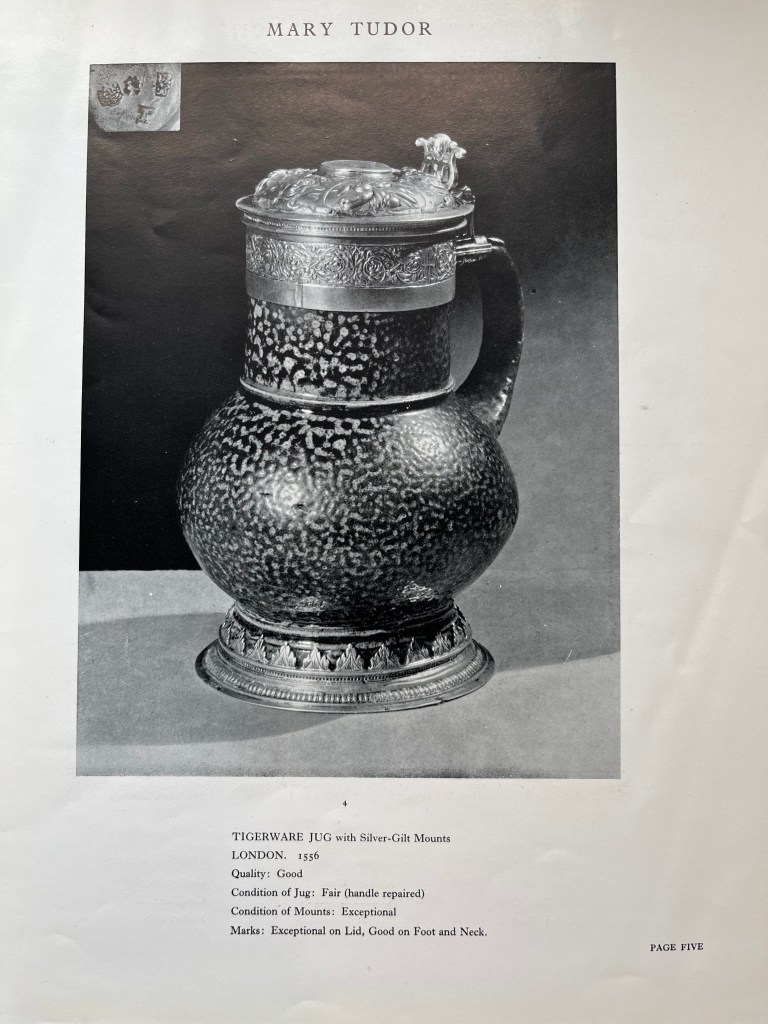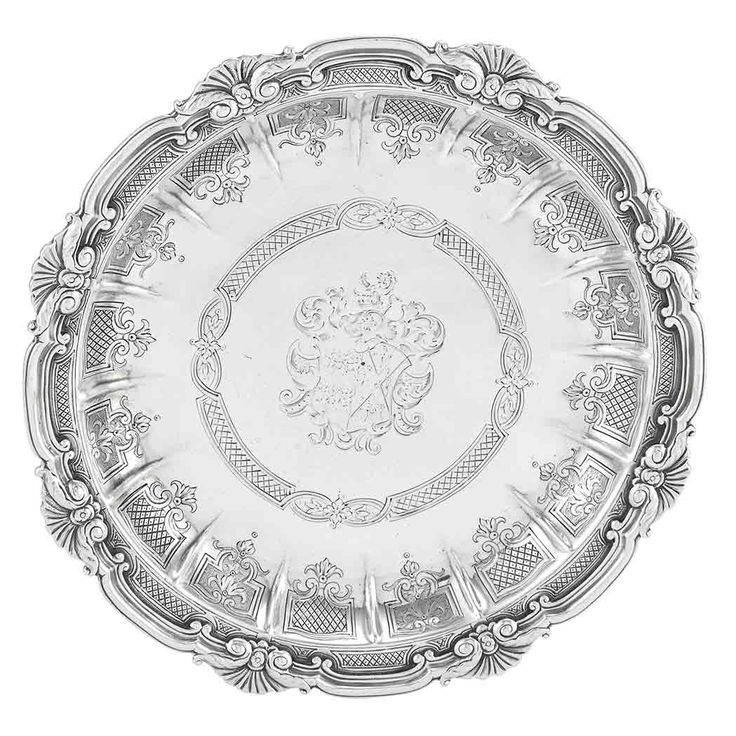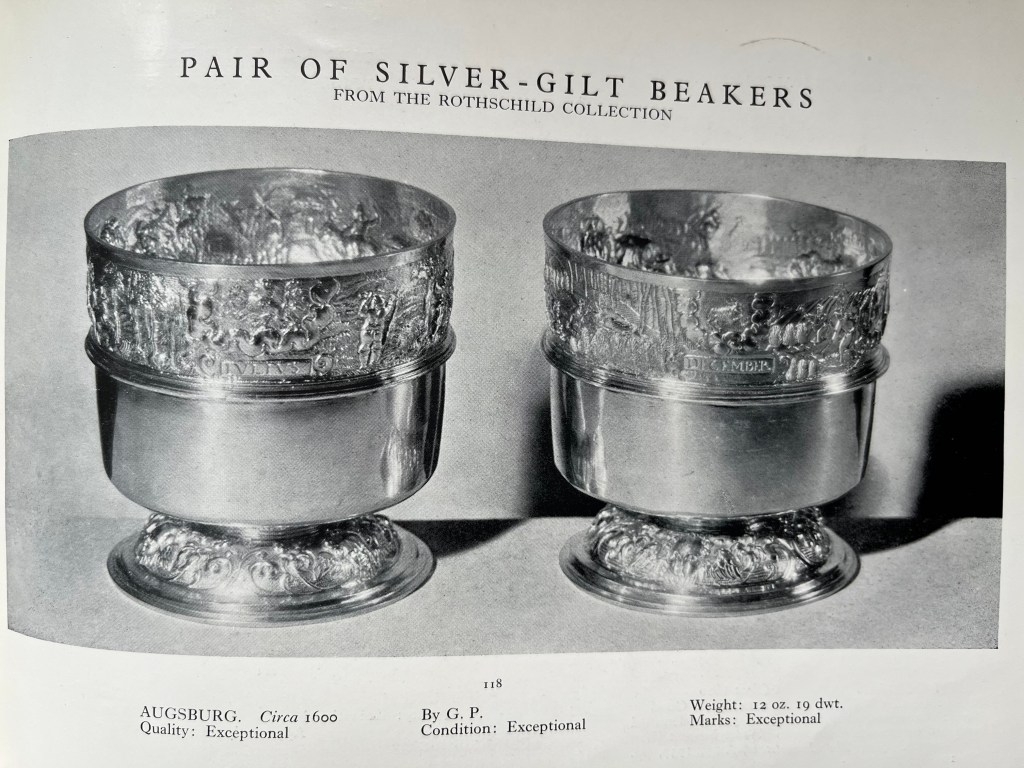Our collections of antique dealer catalogues have had a few more additions over the past months. The latest example of these rare pieces of ephemera is a catalogue produced in 1937 by the world-famous antique silver dealers How (of Edinburgh, Limited). As early 20th century antique dealer catalogues go, it’s quite a large, and obviously expensive to produce, catalogue of stock; it’s 12 inches high, by about 9.5 inches wide and contains 71 pages of black and white photographs of the antique silver that How (of Edinburgh, Limited) had in stock at the time. I guess such catalogues would be sent out to loyal customers, but you could also buy a copy of the How (of Edinburgh, Limited) catalogue for 5 shillings.

How (of Edinburgh, Limited) were established in 1930 by Lt-Commander George Evelyn Paget How (Royal Navy, retired) FSA, Scotland. George How was born in Edinburgh in 1894, and spent much of his youth with his uncle, Lord Cuncliffe, who apparently taught the young How about antique silver. He purchased his first piece of antique silver, a George II silver basting spoon for £32 6d in 1911 in Gibraltar, whilst he was a cadet in the Royal Navy; he still had the spoon in 1936, shortly before the issue date of the How (of Edinburgh, Limited) catalogue.

How (of Edinburgh, Limited) opened their first shop in North Street, Edinburgh, in 1930, before moving to fashionable Charlotte Square, Edinburgh by 1932. The business opened a shop in London by 1933, first in Berkeley Square, then Stratton Street (the location suggested in the dealer catalogue), before settling in Pickering Place, St. James’s after the Second World War.
George’s wife, Jane Prentice How (1915-2004) joined him in the business in the mid 1930s and was herself a leading expert on antique silver, a member of the Plate Committee at Goldsmiths Hall in London, and, by all accounts, a formidable antique dealer in her own right. Jane, known as ‘Mrs How’, continued the business of How (of Edinburgh, Limited) after the death of her husband. Many leading antique silver dealers of the day, including Hugh Jessop, John Bourdon-Smith and Brand Inglis, worked at How (of Edinburgh, Limited) at some stage in their careers as dealers.
The catalogue offers a fascinating insight into a leading antique silver dealer’s stock in the 1930s, including, as one might expect given the status of How (of Edinburgh, Limited) as one of the leading antique silver dealers, some rare and important examples of antique silver. Here, for example, is a rare, early, ‘Tigerware’ jug with silver-gilt mounts, made in London in 1556 – (see below):

Or this mid 17th century ‘Commonwealth’ period silver salver, made in London in 1657 – (see below):

The stock also included examples of the work of the world famous silversmith Paul de Lamerie (1688-1751), always much sought after. Here, for example, is a silver ‘small dish on four feet’ (it’s actually a silver sweetmeat-dish), dating from 1730 – (see below):

This dish, which appears to have been one of a pair, turned up at auction at Christie’s in London on 5th July 2005 (lot 19) in a sale of ‘Important Silver, the property of a European Collector’, when it sold for £7,200 (the Christie’s auction sale catalogue suggested that the engraved Arms in the centre were a later addition – (see below):

The How (of Edinburgh, Limited) catalogue also illustrates antique silver with very illustrious provenances. These examples, ‘The Lencker Tazza’ (silver-gilt, made by Elias Lencker in about 1570), and the silver-gilt beakers, made in Augsburg in about 1600, were both formerly owned by the Rothschild family – (see below):


However, (I couldn’t resist the pun!) one of the most interesting (to me at least) aspects of the How (of Edinburgh, Limited) catalogue is the inclusion in the catalogue of an example of a ‘Certificate of Authenticity’ issued by How (of Edinburgh, Limited). The certificate also directly relates to some of the suggested categories and classifications beneath each of the photographs of the objects in the catalogue – ‘Quality of Object’ – ‘Condition of Object’ – ‘Condition of Marks’, graded variously as ‘Fair’, ‘Good’ and ‘Exceptional’ throughout the catalogue and, as one might expect, as ‘exceptional’ in the certificate example.

Many leading antique dealers and trade organisations, such as the BADA (British Antique Dealers Association) and LAPADA (The Association of Art and Antique Dealers) have offered certificates of authenticity, and many continue to do so, but the How (of Edinburgh, Limited) certificates of the 1930s demonstrate the long genealogy and enduring legacy of authenticity in the market for antiques.
Mark